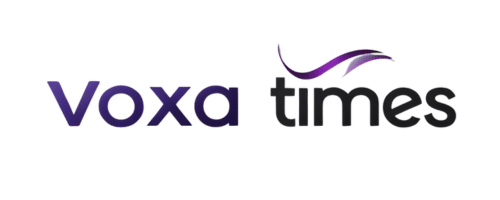When investing in the U.S. stock market, Vanguard’s VTI and VOO ETFs are two of the most popular choices for building wealth through passive investing. Both funds provide diversified exposure to American equities, but they differ in scope, risk, and performance during market fluctuations.
Whether you’re a beginner or a seasoned investor, understanding the distinctions between VTI (Vanguard Total Stock Market ETF) and VOO (Vanguard S&P 500 ETF) is crucial to aligning your investment strategy with your financial goals and risk tolerance, especially during periods of market volatility.
What is VTI? An Overview of the Vanguard Total Stock Market ETF
VTI is designed to replicate the performance of the CRSP US Total Market Index, which covers nearly the entire U.S. stock market, from large-cap to micro-cap companies. This comprehensive approach gives investors access to:
- Over 4,000 publicly traded U.S. companies
- Full representation across sectors and market capitalizations
- Broad diversification, reducing exposure to single-stock risk
Key features:
- Inception: 2001
- Expense Ratio: 0.03%
- Top Holdings: Apple, Microsoft, Amazon
- Sector Allocation: Heavily weighted in Technology, Healthcare, and Financials
With exposure to companies of all sizes, VTI captures the growth potential of small and mid-cap stocks that larger indices might miss.
VTI vs. VOO: Key Differences at a Glance
| Feature | VTI | VOO |
|---|---|---|
| Benchmark | CRSP US Total Market Index | S&P 500 Index |
| Number of Stocks | ~4,000+ | 500 |
| Market Cap Focus | All caps (large, mid, small, micro) | Large-cap only |
| Expense Ratio | 0.03% | 0.03% |
| Volatility | Slightly higher | Lower |
| Diversification | Broader | More concentrated |
| Historical Return (10 years) | ~13.0% | ~13.7% |
Risk & Volatility: How VTI and VOO Perform in Market Turbulence
VTI’s Broader Exposure: Higher Volatility, Higher Potential
VTI’s inclusion of small- and mid-cap stocks means it experiences slightly higher volatility. These smaller firms can deliver impressive returns during growth periods but tend to suffer sharper declines during market downturns.
VOO’s Large-Cap Stability
VOO, concentrated in large-cap companies, typically weathers economic challenges more effectively. During recessions or bear markets, VOO generally exhibits lower drawdowns, making it an ideal choice for risk-averse investors.
Example:
In the 2020 market downturn, smaller companies experienced steeper declines and slower recoveries, leading VTI to face greater short-term losses compared to VOO.
Related Resources: Forbes highlights that VOO suits investors focused on stability and preserving capital.
Diversification: Which Fund Provides Better Coverage?
- VTI: Offers exposure to the entire U.S. stock market, providing a balanced mix of growth and stability. This wide net helps investors benefit from the potential of small up-and-coming companies.
- VOO: Focuses on large, established companies that dominate their sectors. While less diversified, it offers better risk-adjusted returns during economic uncertainty.
Investor Tip:
If you already hold separate small-cap funds, VOO might provide sufficient large-cap exposure without overlap.
Income & Dividend Yield Comparison
Both ETFs have similar dividend yields (~1.2%), but the source of that income differs:
- VOO: More consistent and reliable dividends, thanks to financially robust companies.
- VTI: Includes companies that may not pay dividends, leading to slightly more variability in income.
For income-focused investors, VOO’s stable dividend history may be preferable.
Expense Ratios and Tax Efficiency
Both VTI and VOO boast an ultra-low expense ratio of 0.03%, ensuring minimal cost drag on returns.
In terms of tax efficiency:
- Both are tax-efficient, utilizing Vanguard’s structure to minimize capital gains distributions.
- Investors in taxable accounts benefit from holding either fund long-term due to low turnover and qualified dividends.
Performance in Different Market Conditions
| Market Scenario | Better Performer |
|---|---|
| Bull Market with Small-Cap Surge | VTI |
| Market Correction or Recession | VOO |
| Long-Term Stable Growth | Both perform closely |
If the market favors growth and small-cap stocks, VTI tends to outperform. On the other hand, when the economy slows or markets decline, VOO’s emphasis on large-cap stocks tends to offer a stronger defense against losses.
Which ETF Should You Choose?
- Choose VTI if:
- You want maximum diversification, are comfortable with slightly higher volatility, and have a long-term horizon to ride out market fluctuations.
- Choose VOO if:
- You prefer stability, lower volatility, and are seeking a more conservative approach to U.S. equity investing, especially if you’re nearing retirement.
Many diversified investors actually choose to hold both VTI and VOO to balance broad market exposure with large-cap stability.
Analyst Opinions & Professional Insights
Financial experts often recommend:
- VTI for younger investors who have decades ahead to invest and can absorb short-term volatility.
- VOO is often recommended for conservative investors or retirees focused on preserving their wealth with lower exposure to market volatility.
Financial planners have praised both funds for their cost-efficiency, performance reliability, and simplicity as core portfolio holdings.
Conclusion: VTI vs. VOO — Which Wins?
Ultimately, both VTI and VOO are excellent, low-cost ETFs, but your choice should reflect:
- Your risk tolerance
- Your investment time horizon
- Your existing portfolio composition
For most investors seeking broad U.S. stock market exposure, VTI is the all-in-one solution. For those wanting to focus on large-cap stability, VOO is a time-tested, dependable choice.
For More Latest News and Information Visit Now! Voxa Times.




